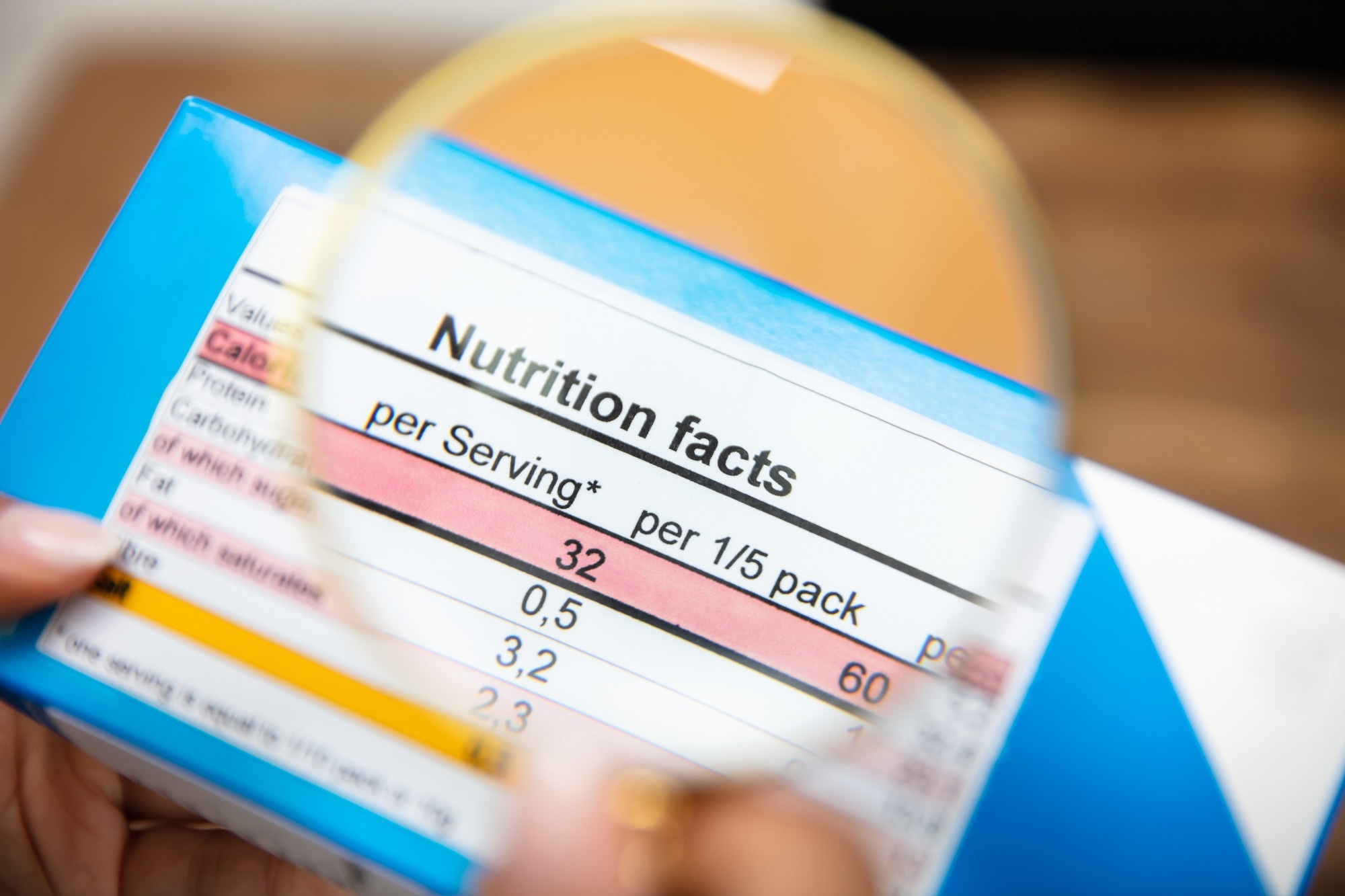Researchers analyzing nearly 600 grocery items found that flashy front-label claims—like “heart healthy” or “keto-friendly,” often fail to match real nutrition, urging doctors and shoppers to focus on what’s inside the Nutrition Facts panel instead.
 Study: Do Food Packaging Health Claims Depict Healthiness or Mislead Patients? Image credit: Andrey_Popov/Shutterstock.com
Study: Do Food Packaging Health Claims Depict Healthiness or Mislead Patients? Image credit: Andrey_Popov/Shutterstock.com
In a recent study published in the Peer-reviewed Reports in Medical Education Research, researchers tested whether the number and type of front-of-package health claims predict objective nutritional quality across commonly purchased United States (U.S.) foods.
Background
In the U.S., front-of-package messages shape split-second decisions for millions. Yet diet-related disease remains high, and people struggle to judge products quickly and accurately. Regulators like the U.S. Food and Drug Administration (FDA) allow nutrient content, function, and restricted health claims, but these snippets may not reflect overall nutritional quality.
Scoring systems such as Nutri-Score aim to summarize healthfulness, while national surveys reveal what Americans buy. The study aimed to inform family physicians advising patients about food choices online and in-store. Further research should test whether claim counts reliably track healthfulness.
About the study
Researchers sampled commonly purchased foods and beverages from Walmart to mirror a typical U.S. grocery experience. Using the United States Department of Agriculture (USDA) “What We Eat in America” categories from the National Health and Nutrition Examination Survey (NHANES) 2017-2020 dataset, they selected 11 of 14 main groups relevant to everyday shopping: milk and dairy, snacks and sweets, fruits, protein foods, grains, vegetables, beverages other than water, flavored water, condiments and sauces, fats and oils, and sugars.
From 122 subcategories, they identified the two most frequently purchased items and then chose five specific products per subcategory, substituting close alternatives when needed to reach five.
Two independent raters reviewed front-of-package panels for promotional statements and categorized each as nutrient content claims, function claims, or restricted health claims according to U.S. FDA definitions; safety-related allergen notices were excluded, while marketing terms such as gluten-free, organic, and keto-friendly were treated as nutrient content claims.
Nutrition Facts panels were abstracted to compute Nutri-Score numeric values (lower is healthier) using the published algorithm endorsed by the World Health Organization (WHO). Study data, including product images, labels, and ingredient lists, were managed in the Research Electronic Data Capture (REDCap) platform at SUNY Upstate Medical University. Associations were evaluated with ordinary least squares (OLS) linear models implemented in R (R Foundation).
Study results
Across 11 item categories, 597 distinct products were analyzed, providing a broad snapshot of what shoppers encounter in stores and online. Nutrient content claims (for example, “high in fiber,” “low sodium,” “gluten-free,” “keto-friendly,” or “organic”) were by far the most common, with 1,073 instances recorded on front-of-package panels.
By contrast, restricted health claims explicitly permitted by the U.S. FDA were rare (14 total), as were general function claims (22 total). Given these small counts, restricted health and function claims were not modeled further, keeping the analysis focused on the ubiquitous nutrient content claims that patients see most often.
When all categories were combined, no consistent relationship was observed between the number of nutrient content claims on a package and a better Nutri-Score numeric value (where lower scores indicate healthier products). In other words, simply counting front-of-package claims did not reliably track underlying nutritional quality. This null result held when products were stratified by major category: most groups showed no statistically significant link between claim counts and nutrition scores.
There were a few notable category-specific exceptions. In grains and snacks/sweets, regression models indicated a small but statistically significant improvement in Nutri-Score (P<0.05) as the number of claims increased. Conversely, among fruits, more claims were associated with a significantly worse nutrition score (P<0.05). These opposing directions, limited to specific categories, highlighted the inconsistency of using “more claims” as a shortcut for “healthier choice.”
The category itself, however, mattered a great deal for the nutrition score. Items conventionally viewed as wholesome, such as vegetables and fruits, tended to achieve more favorable Nutri-Scores than categories widely regarded as less healthy, such as sugars and fats/oils. This pattern reinforces longstanding guidance messages: what aisle the food comes from is a stronger signal than how many persuasive words appear on the front of the box.
Due to product information being obtained from online listings, packaging images may differ slightly from what shoppers see in stores. Only 11 of 14 USDA categories were included, and some claim classifications relied on the researcher's judgment despite standardized procedures. Moreover, any single scoring system, such as Nutri-Score, provides a simplified representation of food healthfulness.
From a practical standpoint for clinicians and shoppers, these findings suggest that the cognitive shortcut of “pick the package with more health badges” is unreliable. A better shortcut is “shop from healthier categories first,” then compare Nutrition Facts for specific nutrients of concern. The modeling diagnostics supported an adequate fit of OLS methods, and all analyses were conducted using R (R Foundation).
Conclusions
Front-of-package health claims, taken as a simple count, did not consistently reflect actual healthfulness as measured by Nutri-Score; grocery category was a stronger predictor of nutritional quality. For family physicians advising busy patients, encourage shopping by healthy categories (e.g., vegetables, fruits, minimally processed proteins, and intact grains) and ignore front-panel marketing. Then, use the Nutrition Facts label to fine-tune choices for sugars, saturated fat, and sodium.
Download your PDF copy now!